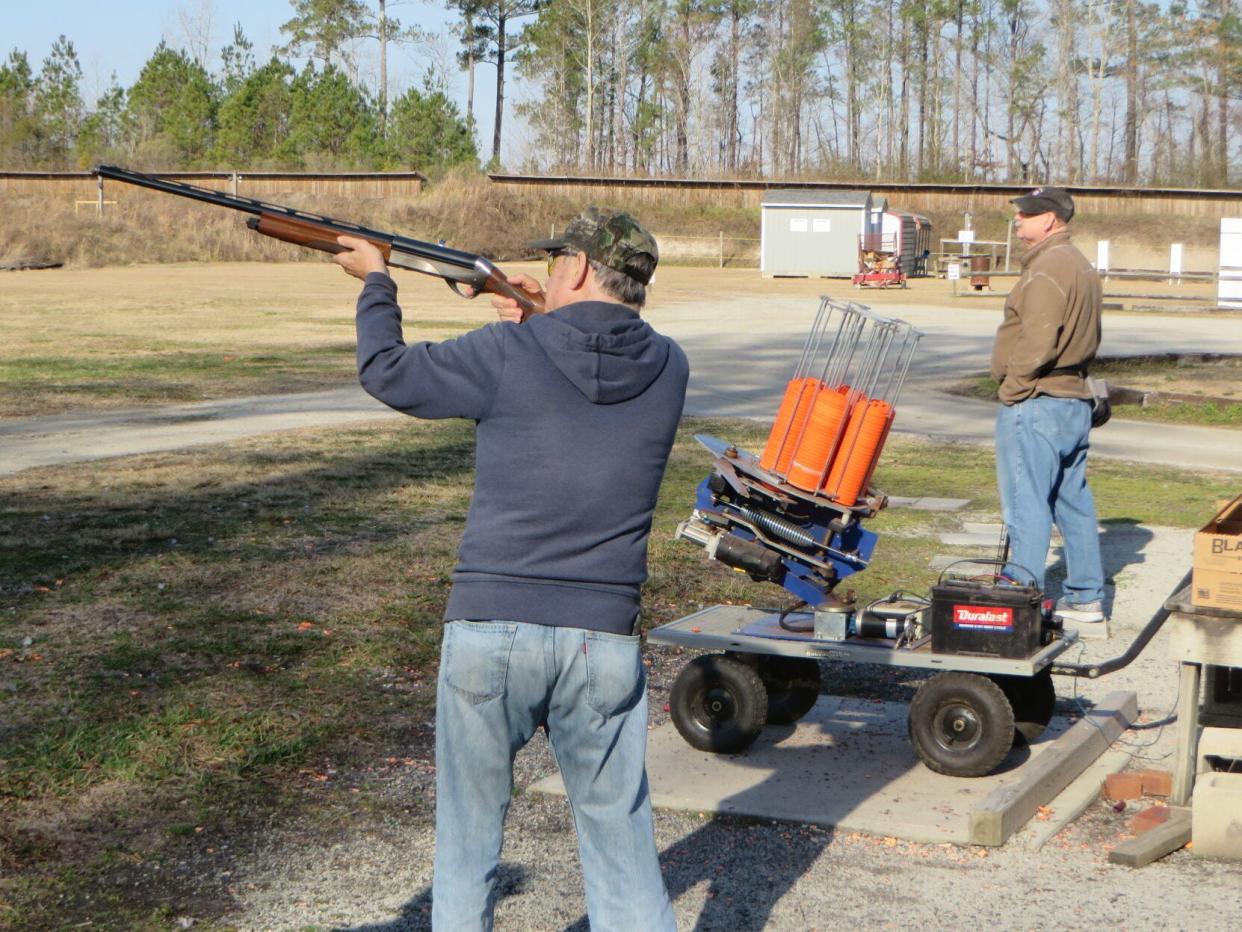The Sun Journal Outdoor Column: Battling Cabin Fever

Deer and duck hunting seasons have ended for the year and, with their passing, a lot of outdoorsmen are experiencing the first stages of withdrawal. The symptoms are commonplace and pitiful. The typical sufferer sits staring at a television through bleary eyes, occasionally mumbling to himself as images of gargantuan basketball players or twirling figure skaters flash across the screen. Once in awhile he might stumble across an outdoor show, like “Fishing With Roland Martin,” but that just makes things worse, sort of grinds his nose in it you might say.
It doesn’t have to be that way. There are still things diehard outdoorsmen (and women) can do during the “frostbite months” instead of becoming couch potatoes. The following are a few suggestions for getting out and about until the Spring Equinox signals the start of another fishing season. Any of them may be just what the doctor ordered for cabin fever.
(1) Go paddling: In some respects, this is the finest of times for easing down a creek or other sheltered waterway in a canoe or kayak. There are no bugs, little motor boat traffic, and it’s cooler. In addition, with fewer folks in the woods along a stream, the odds are better that you might spot a deer, a black bear or some curious otters. (Just don’t forget your camera.) And remember, the water’s cold so you want to avoid an unexpected dip. Just in case, file a float plan with some responsible person, carry extra clothes in a waterproof bag, and wear a PFD.
(2) Take a hike: With few hunters in the woods, forest trails become more hiker-friendly. This is an excellent time to explore places like the Weetock Trail where it winds through Croatan Forest between Maysville and Swansboro. Maps and guidelines are available at the National Forest Service office on Highway 70 east of New Bern. Another good place to check out is the Latham-Whitehurst Nature Park off Broad Creek Road between Hwy. 55 and Fairfield Harbour. Look for the sign on the left side of the road.
(3) Shoot trap: No, trap is not some kind of weird little bird. It’s a game where a shotgunner tries to hit clay targets (skeet) thrown by another person. The thrower can use a hand-launcher (available at sporting goods stores for under $20) or a portable, mechanical machine. The difficulty and variety of the shooting games that can be played is limited only by the participants’ imagination. The only drawback is that “clay pigeons” can’t be eaten after they’re bagged.
(4) Sporting Clays: Those marksmen who find trap a little too tame will discover just what they want at a sporting clays range. It’s been described as “golf with a shotgun” and it’s both fun and challenging. A good place to start is Hunters’ Pointe Sporting Clays off Hwy. 17 north of Washington, NC (phone number — 252-975-2529). They also have other target-shooting activities as well as clays.
(5) Bird watching: Late-winter is a great time to view birds in eastern North Carolina. A lot of different species are migrating through, including waterfowl who are reaching their numerical peak. For those who have never experienced it, seeing the masses of tundra swans on the Pungo Lake portion of Pocosin Lakes National Wildlife Refuge can be the thrill of a lifetime. The Lower Neuse Bird Club has members who would be happy to steer you in the right direction. They meet the first Tuesday of each month at Garbor Methodist Church in Trent Woods. Wade Fuller (252-229-8012) can give you more details.
(6) Beach combing, etc: The number one activity on nearly all beaches is beach combing — strolling along the water’s edge and looking for unique shells, neat flotsam, whatever happens to be there. A problem in the summer is the crowds, plus it’s hot. This time of year, offshore storms send all kinds of neat shells as well as some other stuff to our shores. One of my friends found a bale of marijuana on the shore at Portsmouth Island one winter day. (Yes, he turned it in.)
The beach is also a great place to fly a kite on a nice day in the winter. With few people and a constant breeze, even klutzes like me can get one aloft with no problem. Pick a mild afternoon and pretend you’re Ben Franklin — with no lightning of course.
(7) Go camping: One difference between summer and winter camping in this part of the country is that, for the latter, you need a good sleeping bag and reliable protection against possible wet weather. Other differences, like the solitude of a winter forest and celestial constellations that take your breath away as you sit toasting beside a campfire, are the ones that make it worthwhile.
(8) Fossil hunting: Maybe you can’t hunt deer or ducks anymore this year but you can search for the remains of animals that swam across this landscape millions of years ago when the ocean extended across much of the present-day coastal plain. Fossiliferous limestone (the rock most folks use in driveways and septic tank fields) is full of sharks teeth, prehistoric whale vertebrae and similar fossils. The Fossil Museum in downtown Aurora, N.C. is a good place to start. They have piles of limestone (marl) right across the street and can help you identify what you find.
They can also point you toward other potential “mining” sites. Phone 252-322-4238 for directions and more information.
Regardless of where you go or what you do, this is a good time of year to get out and about in this neck of the woods. Just dress for the weather, use some common sense, and thank God you don’t live in Fargo, North Dakota where it was 21 degrees below zero a few weeks ago.
This article originally appeared on Sun Journal: The Sun Journal Outdoor Column: Battling Cabin Fever

